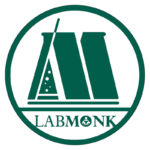[ps2id id=’background’ target=”/]
BACKGROUND
The glands present in the mucous lining of the stomach produces a digestive fluid. It plays a major role in digestion.
So the basic objective of this test is to perform biochemical analysis of gastric juice.
[ps2id id=’requirements’ target=”/]
REQUIREMENTS
Reagents: 0.1N and 0.05 N HCl
Hemoglobin solution: 2% hemoglobin solution is prepared with 0.05 N HCl
Trichloro acetic acid: 10% of solution in distilled water
Phenol reagent: 1N phenol reagent was prepared by diluting with distilled water two times
Alkaline mixture: 2% solution of Na2CO3 in 0.1N NaOH
Alkaline reagent: 100 ml of alkaline mixture prepared is mixed with 1 ml of 4% aqueous solution of potassium tartarate and 1 ml of 2% aqueous copper sulfate.
Orcinol: 1.6 g of orcinol + 100 ml of distilled water,
H2SO4: H2O: 150 ml of concentrated sulphuric acid + 100 ml of distilled water.
Orcinol-sulphuric acid reagent: 1 volume of reagent orcinol + 7.5 volume of just before use.
Galactose-mannose: Each was taken in an equal amount for standard.
Bovine albumin
Apparatus: Test tubes
Beakers
Measuring cylinder
Water bath
Spectrophotometer
[ps2id id=’procedure’ target=”/]
PROCEDURE
Gastric juice will be collected and analyzed for various biochemical parameters in the following ways.
Pepsin
At first dilute the gastric juice (1:250). Then take this diluted gastric juice about 0.4 ml and then 1 ml of 2% haemoglobin solution mixed with 0.05 N HCl in two different test tubes. Now keep two test tubes in 37oC in incubator for about 10 min. Then bring it our and add the haemoglobin solution to the dilute gastric juice and then incubate it at 37oC for about 20 mins. This process of digestion was then stopped by adding 1.4 ml of icy cold trichloroacetic acid and then keeping it in ice bath for about 15 min. Filter to bring out the undigested protein. Take 0.4 ml of this filtrate for determining tyrosine by addition of 4ml of alkaline reagent then 0.4 ml of diluted phenol reagent after 10 min.1 Then in a spectrophotometer estimate the optical density at 610 nm.
Mucin
Mucin is a glycoprotein and it mostly includes hexoses, protein etc. which in turn is estimated by alcoholic precipitation of gastric juice.2
Alcoholic precipitation: Mix gastric juice (1 ml) and 9 ml of 95% alcohol and then centrifuge it at 3000 rpm for about 15 min. Then the precipitate obtained is mixed with 1 ml of 0.1 N NaOH. Leaving 0.1 ml of this mixture for protein estimation takes the rest 0.9 ml and add 3.6 ml of 6 N HCl. Then hydrolyze this mixture in boiling water for about 2 hours. Then neutralize this hydrolysate by 4N NaOH by using phenolphthalein and make up the volume to 9ml by adding distilled water. This hydrolysate is used for estimation of hexoses.1
Total hexoses
Take 0.4 ml of hydrolysate obtained from alcoholic precipitate and to it add 3.4 ml of orcinol reagent. Then in a water bath heat this mixture. Then take this mixture out and cool under tap water measure for the intensity of the colour in a spectrophotometer at 540 nm in contrast to blank made with water.4
Total hexose content =gastric juice jug/ml ± SEM
Protein
Take that 0.1 ml of alcoholic precipitate of gastric juice and add to it 0.9 ml of distilled water. From this take out 0.4 ml and put it in a test tube and add 4ml of alkaline reagent and keep it for about 10 min.4 After that add 0.4 ml of phenol reagent and leave for 10 min. Then in a spectrophotometer take the absorbance readings at 610 nm.5
Protein content = standard curve made with bovine albumin + gastric juice (pg /ml) ± SEM
[ps2id id=’conclusion’ target=”/]
CONCLUSION
Biochemical analysis of gastric juice helps in knowing about various diseases related to stomach and other digestive organs.
[ps2id id=’references’ target=”/][ps2id id=’1′ target=”/]
REFERENCES
-
Joan Fourie. Measurement of pepsin in procine gastric juice. South African Journal of Laboratory and Clinical Medicine S.A Medical Journal 1974; 1873-1875.
-
Sathoh K. Serum lipid peroxide in cerebrovascular disorder determined by a new colorimetric method. International Journal of Clinical Chemistry. 1978; 90: 37-43.
-
Gobor szasz. Comparison between P-nitrophenol glucuronide and phenolphthalein glucuronide as substrates in the assay of beta-glucuronidase. Clinical Chemistry. 1967, 13(9):752-759.
-
JT Wearne. Estimation of Urea by Diacetyl Monoxine Method. Journal of Clinical Pathology. 1958; 11(4): 367.
-
Herman Siplet, Komarov SA and Haprry Shay. Estimation of Mucin in Gastric Juice. The Journal of Biological Chemistry. 1948; 176:545-561.



